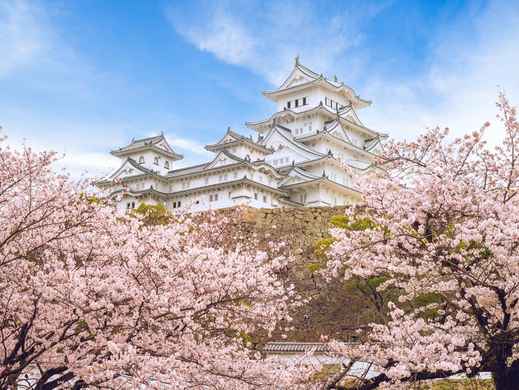


Hiroshima
Asia
/
Japan
/
Hiroshima
Perched along Japan's stunning Seto Inland Sea, Hiroshima is a city that personifies resilience and harmony, dramatically evolved from a place wounded by atomic obliteration into a lively cultural melting pot. Benefiting from a temperate climate, cherry blossoms grace the city in spring, balmy summers making island hopping a joy, followed by breath-taking autumn colors, making it a preferred destination no matter the season.
The modern vibe of Hiroshima sees historic trams maneuvering past sleek edifices and time-honored shrines. Well reputed for their amicability, the locals are fond of international travelers, always up for unveiling their customs, traditions, and their much-loved okonomiyaki - a delectable layered pancake that stands as the city's culinary icon.
Hiroshima sets itself apart with a poignant blend of education aimed at global peace and a zestful celebration of life. The Peace Memorial Park and Museum extend a riveting echo of history, whereas the reconstructed castle and the floating torii gate of Miyajima bear witness to Japan's architectural brilliance. Its position as a gateway to the Setouchi region makes it a fantastic starting point for art island visits and coastal community exploration.
If you're a food connoisseur, trying the Hiroshima-style okonomiyaki is a must, which is differentiated from its Osaka counterpart by its layered structure and rich servings. Local oysters, whether consumed raw, roasted or fried, are considered Japan's best. For a unique experience, hop on a ferry to Miyajima at dusk to witness the sunset illuminating the floating torii gate, coupled with the savory taste of local momiji manju (maple-leaf-shaped cakes); it's a memory that will last a lifetime.

Get to Know Hiroshima
Take a tour of this destination's highlights
Popular Areas in Hiroshima

Travel Tips for Hiroshima
What you need to know before traveling here
Getting Around Hiroshima
A guide to Hiroshima's local transportation
Hiroshima's classic streetcars offer both practicality and a sense of nostalgia. A standard fare of 180 yen per ride is to be paid when you exit. A special pass isn't required - simply enter through the back door and pay the driver upon exiting. The routes cover the majority of the essential attractions.
Practical Tips for Hiroshima
Things to prepare and best way to visit
The spring season (March-May) and autumn (October-November) provide mild weather and a picturesque panorama. Spring welcomes cherry blossoms, while autumn enchants with vibrant fall colors and pleasant climates.
Yes, it's entirely safe. The region has standard radiation levels and has been secure for visitors since slightly after 1945. Millions of people visit every year without health worries.
At least two full days are suggested - one day dedicated to the city's peace-related attractions and the next for Miyajima Island. If you desire to explore local culinary heritage or take day trips, plan for an additional day.
For upscale dining venues and favorite okonomiyaki joints during peak seasons, yes. Many informal eateries operate on walk-in service, but expect waiting lines during lunchtime rush.
Catch the JR Sanyo Line to Miyajimaguchi Station, followed by a 10-minute ferry trip. Both JR and private ferries run on regular schedules. The JR ferry ride is covered by the Japan Rail Pass.
See All Practical Tips for Hiroshima

Explore Hiroshima
Create your itinerary with our top picks below

Get to Know Hiroshima

Travel Tips for Hiroshima

Explore Hiroshima
More Destination Near Hiroshima




































 Facebook
Facebook Instagram
Instagram TikTok
TikTok Youtube
Youtube Telegram
Telegram
